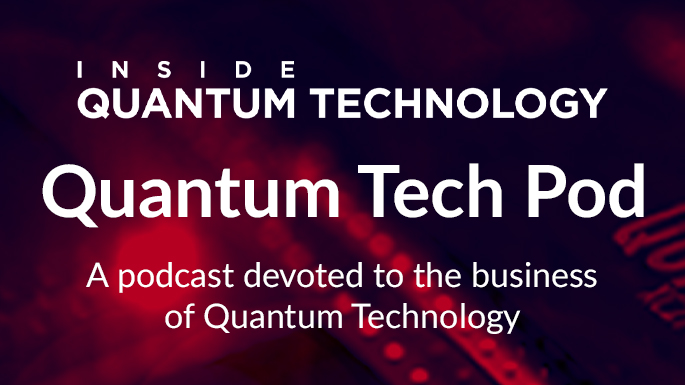Quantum News Briefs September 13: Multiverse Computing Selected to Participate in the 2024 AWS Generative AI Accelerator • Quandela Announces the Launching of its Canadian Subsidiary, Quandela Canada ˆ• Moth Takes on Gaming Industry with New Chief Scientific Officer: Quantum Pioneer James Wootton • Quantum Bridge Accepted into Canadian Federal Procurement Program •

Multiverse Computing Selected to Participate in the 2024 AWS Generative AI Accelerator
 Multiverse Computing, a global leader in value-based quantum and quantum-inspired AI software solutions, today announced it has been selected for the second cohort of the AWS Generative AI Accelerator according to September 12 news release.
Multiverse Computing, a global leader in value-based quantum and quantum-inspired AI software solutions, today announced it has been selected for the second cohort of the AWS Generative AI Accelerator according to September 12 news release.
The program identifies top startups using generative AI to solve complex challenges and help them scale. Participants will receive AWS credits, mentorship and learning resources to further their use of artificial intelligence (AI) and machine learning (ML) technologies and grow their businesses.
Multiverse Computing will use this opportunity to expand the capabilities of CompactifAI, software that uses quantum-inspired tensor networks to optimize large AI models by creating smaller, more efficient versions. This approach opens up additional use cases for large generative AI models by making them more portable and by reducing energy and compute requirements.
The Multiverse Computing project team will work with CompactifAI and Meta’s Large Language Model Llama 3 405B to find ways to replicate the performance of large models within optimized compute environments. The company will use AWS compute resources, along with infrastructure designed for large-scale distributed training, such as Amazon SageMaker HyperPod, which manages models and training datasets across multiple AWS GPU instances without compromising performance.
Quandela Announces the Launching of its Canadian Subsidiary,
Quandela Canada
 Quandela, European leader in photonic quantum computing, has announced the launch of its Canadian subsidiary, Quandela Canada, in Montreal as per the September 12 announcement. This marks a key step in the company’s international expansion, which is accompanied by the deployment of the first European
Quandela, European leader in photonic quantum computing, has announced the launch of its Canadian subsidiary, Quandela Canada, in Montreal as per the September 12 announcement. This marks a key step in the company’s international expansion, which is accompanied by the deployment of the first European
quantum computer on North American soil, at the Bellevue Data Centre operated by Eaxion, a subsidiary of Groupe EDF. This deployment is a major step forward in the realization of the partnership signed in November 2023 between Quandela and Exaion.
This operation reinforces the company’s international expansion strategy. This strategy will result in the creation of quantum hubs, which are true networks of commercial, technological and scientific partners, aimed at accelerating the quantum transformation of the industrials within these hubs. Quandela also plans to open a new subsidiary in South Korea this autumn, in addition to the progressive deployment of several quantum hubs around the world.
The launching of Quandela’s Canadian subsidiary coincides with the strategic deployment of the first European quantum computer in North America, installed in Exaion’s Bellevue Data Centre, in collaboration with the infrastructure of PINQ², the Plateforme d’innovation numérique et quantique du Québec (Digital and Quantum Innovation Platform of Quebec). This deployment marks a decisive step in the fusion between quantum and high-performance computing technologies in Quebec, thus setting a new benchmark for the
joint commercial offerings of Quandela and Exaion.
Moth Takes on Gaming Industry with New Chief Scientific Officer: Quantum Pioneer James Wootton
 Moth, a pioneering company developing quantum algorithms to enhance generative artificial intelligence in the creative industries, announces the appointment of James Wootton as Chief Scientific Officer. Wootton is leaving his post in error correction and quantum research at IBM, and joins Moth in the mission to bring quantum computing technology into the creative industries.
Moth, a pioneering company developing quantum algorithms to enhance generative artificial intelligence in the creative industries, announces the appointment of James Wootton as Chief Scientific Officer. Wootton is leaving his post in error correction and quantum research at IBM, and joins Moth in the mission to bring quantum computing technology into the creative industries.
Moth is an applied quantum technology company leveraging the power of quantum computing to unlock new creative possibilities in music, gaming, and the arts. Co-founded by Ferdinand Tomassini, Moth is not only pioneering the development of innovative use cases for this new frontier of technology but is also dedicated to engaging and nurturing creative communities throughout the process. Moth’s widescreen view of creativity is fundamentally future-oriented and pro-art. The company raised a £3 million seed round of fundraising in 2024 and is headquartered in London.
In his new role, Wootton will directly oversee the company’s scientific roadmap, focusing on developing algorithms to address critical bottlenecks in generative technologies. His efforts will extend to tackling optimization issues, aiming to produce superior artificial intelligence and advanced techniques to generate content. Additionally, Moth is committed to creating products that leverage today’s NISQ (Noisy Intermediate-Scale Quantum) computers for innovative and creative experiences. Pioneering developments are on the horizon as Moth continues to push the boundaries of what’s possible in quantum computing and the creative industries.
Quantum Bridge Accepted into Canadian Federal
Procurement Program
 Quantum Bridge, a company offering a range of advanced quantum-safe data-security solutions, today announces that it has been accepted into a fast-track government procurement program as per September 11 news release. This follows extensive testing by the Canadian Government of the company’s Symmetric-Key Distribution System (SDS). This first of its kind solution now incorporates both Distributed Symmetric Key Establishment (DSKE) technology and multiple Post-Quantum Cryptography (PQC) algorithms including the Module-Lattice-Based Key-Encapsulation Mechanism (ML-KEM). The latter being recently established by the U.S. National Institute of Standards and Technology as one of three new standards for quantum-safe
Quantum Bridge, a company offering a range of advanced quantum-safe data-security solutions, today announces that it has been accepted into a fast-track government procurement program as per September 11 news release. This follows extensive testing by the Canadian Government of the company’s Symmetric-Key Distribution System (SDS). This first of its kind solution now incorporates both Distributed Symmetric Key Establishment (DSKE) technology and multiple Post-Quantum Cryptography (PQC) algorithms including the Module-Lattice-Based Key-Encapsulation Mechanism (ML-KEM). The latter being recently established by the U.S. National Institute of Standards and Technology as one of three new standards for quantum-safe
encryption.
By combining DSKE and Post-Quantum Cryptography such as ML-KEM in a single encryption solution, Quantum Bridge has developed a truly unbreakable method for protecting data and communications from ‘harvest-now and decrypt later’ attacks. Many recognized cryptographic authorities have recommended the use of symmetric keys in combination with PQC to protect sensitive information. The Quantum Bridge solution now allows the integration of this combination of technologies into existing communications infrastructur
Microsoft, Atom Computing to Build Quantum Supercomputer
Microsoft and Atom Computing have been working closely together to accelerate the development of fault-tolerant quantum supercomputers that can solve impactful problems too difficult for even the most powerful classical supercomputing systems.
“Through this collaboration, we’re bringing a new generation of reliable quantum hardware to customers by integrating and advancing Atom Computing’s neutral-atom hardware into our Azure Quantum compute platform. With it, we are bringing the best-in-class from Microsoft and our partner ecosystem to provide the commercial offering of a reliable quantum machine,” Microsoft said in a recent blog post.
Atom Computing explained For most existing quantum computing technologies the fundamental physical qubits that these technologies work with are not perfect; the qubits pick up environmental noise, have unwanted interactions with each other, and can be difficult to manipulate within the quantum computing platform itself. In order to run large and meaningful calculations the error rates need to be many orders of magnitude smaller than what’s possible with individual physical qubits.
There is a solution to overcoming the limitations of individual physical qubits: by using advanced algorithms and techniques – also known as “quantum error-correction” – multiple physical qubits can be grouped together to form a single so-called “logical qubit” which then acts like a single effective qubit with very low error. The advantage of logical qubits is that they can be scaled to have almost arbitrary low error rates by leveraging numerous physical qubits and clever encoding schemes. This paves the road to running algorithms that are extremely resistant to the imperfect operations of individual physical qubits.”





















